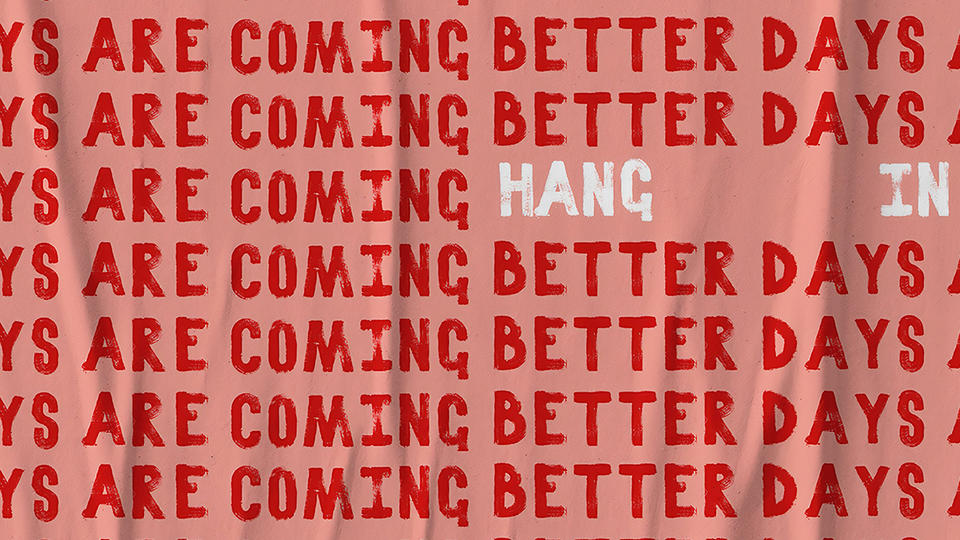Institution Of Higher Earning
How institutional ownership affects payout.


Based on research by Alan Crane, James P. Weston and Sébastien Michenaud
How Institutional Ownership Affects Payouts
To learn more about the methodology behind this story, please see the video below.
- Institutional investors can play an outsized role in determining stock dividends.
- As little as a one-percentage point rise in institutional ownership can cause a $7 million (8 percent) increase in dividends.
- Institutional owners can influence payouts with the threat of selling, shareholder activism and even old- fashioned jawboning.
Markets tend to be obsessed with institutional investors. Hedge funds and other institutional investors are, after all, the pros. While there’s been ample research on the behavior of institutional investors, however, confirming a link between these investors and the level of dividend payouts has proven elusive. Until now, that is.
Previously, the question concerned chickens and eggs: Do institutional investors influence stock payouts, or do they just choose firms where such payouts are prevalent? Using an innovative study sample, Rice Business professors Alan Crane and James Weston have found a clear link between the level of institutional investment and dividend payouts.
In order to tackle this problem, Crane and Weston joined Sébastien Michenaud of DePaul University to look at dividend payouts from the Russell 1000 and Russell 2000 indices between 1991 and 2006.
The Russell 1000 is a value-weighted index of the largest 1,000 U.S.-listed firms. It competes with the highly popular S&P 500 index. The Russell 2000 is a value-weighted index of the 2,000 next-largest firms and has less competition in indexing mid-to-small cap stocks.
According to the team’s estimates, a 1 percent increase in institutional investment in a firm caused a $7 million or 8 percent increase in dividends. The researchers were particularly interested in activities of firms that had fallen from the Russell 1000 and were not at the top of the Russell 2000 index. Why? Because this in-between zone between the Russell 1000 and 2000 is one of the few cases where the influence of institutional investors can be clearly traced.
Fund managers, Weston explains, closely watch the top companies in the Russell 2000 — and the outcomes of those investments may or may not reflect their professional choices. But no one can know in advance the dividing line “between the 999th and 1001th largest stocks,” he notes. “Where the music stops, on June 30th, which is the day the index weights are defined for the year, is a crapshoot.”
The result is a study scenario that’s akin to true randomization — necessary to the scientific method.
The results? Institutional ownership, the researchers found, was roughly nine percentage points higher for firms at the top of the Russell 2000 compared to firms at the bottom of the Russell 1000. This difference is statistically significant. But did these firms change their behavior once they fell into the category in which large institutional investors would take interest?
What the researchers found was a pronounced pattern. Columbia Sportswear, for example, was a low-ranked Russell 1000 firm between the years 2001 and 2005. In 2006, Columbia fell out of the 1000 to land at the top of the Russell 2000. By the end of 2006, the company initiated a dividend, after investor pressure to boost payout.
Institutional investors, the researchers concluded, can exert influence for greater payouts in a number of ways. The most obvious is threatening to withdraw from a given stock altogether. Because such investors generally represent a large percentage of overall stock ownership, their threats can’t be taken lightly.
Another way institutional investors can throw their weight around is by getting more active. Proxy voting, which allows shareholders to vote as a block, wields tremendous pressure on firms to pay out more in the way of dividends. The researchers found that firms at the top of the Russell 2000 were subject to far more shareholder proposals, especially those related to corporate governance, and far fewer management-backed proposals. The mere threat of voting, the researchers found, can influence firm policies.
Studying the unpredictable dividing zone between the Russell 1000 and Russell 2000 gave the scholars a unique chance to test an important economic question with conditions close to those in a random medical trial. The takeaway, however, is concrete. The rise of institutional investors in recent decades has led to better monitoring of corporations, which means shareholders are better off sharing investments with large instutional investors.
So the next time you’re researching stocks, make sure to look at how much of the target company is institutionally owned. It may mean more in the way of dividends down the road.
To learn more about the methodology behind this story, please see the video of Professor James Weston speaking at a recent Rice Business Insights Series titlted "Cause and Effect. Making Sense of Data."
Alan Crane is an associate professor of finance at the Jones Graduate School of Business at Rice University.
James P. Weston is the Harmon Whittington Professor of finance at Jones Graduate School of Business at Rice University.
To learn more, please see: Crane, A. D., Michenaud, S., & Weston, J. P. (2016). The effect of institutional ownership on payout policy: Evidence from index thresholds. The Review of Financial Studies, 29(6), 1377–1408.
Never Miss A Story
You May Also Like
Keep Exploring
Men spend more for Valentine's Day
Some behaviors tend to align with and reinforce people’s gender identity – and that includes Valentine’s Day gift-giving behavior, suggests Constance Porter, a marketing and customer relationships expert at Rice University’s Jones Graduate School of Business.
Soul Search
What questions should you ask when a faith institution fails you?


By Anastasiya Zavyalova
What Questions Should You Ask When A Faith Institution Fails You?
This article originally appeared in the Houston Chronicle as "For Catholics, what to ask your priest — and yourself — about abuse scandal"
It’s a TV image so common we barely pause to look up: a hive of uniformed law enforcement officers swarming onto a crime scene. But the target of this SWAT-type strike was groundbreaking.
Unfolding on air over a “developing story” banner in November, the surprise targeted the Roman Catholic Archdiocese of Galveston-Houston. Instead of contraband or drugs, law enforcers were seeking records linked to a diocese priest, recently released on bond, accused of sexually abusing children.
While the optics of a police raid on a church were unusual, the crime allegation behind it is by now familiar. The world has been aware of systemic sexual abuse in the U.S. Catholic Church since 2002, when the Boston Globe’s Pulitzer Prize-winning investigation exposed the breadth of this crime epidemic. Catholics might reasonably have assumed then their church would tackle the crisis swiftly and forcefully. Instead, new revelations of crimes by priests against children continue year after year, in stunning lists of dozens, hundreds and thousands.
In recent months, in the wake of federal and state investigations nationwide, some dioceses have begun releasing lists of priests accused of child abuse without waiting for the Vatican’s green light. During Christmas weekend, Pope Francis implored predator priests to turn themselves in, swearing the church would bring the guilty to justice. Yet in the very same month, revelations about church sex crimes against children were breaking out in Illinois, California, and New York.
As a scholar of scandals and reputation management, I have spent more than a decade analyzing the child sex abuse scandal in the Catholic Archdiocese of Philadelphia, looking at how such events affect organizations and their members. Based on similar cases of institutional crisis, I believe the Church’s slow action during its sexual abuse crisis indicates that someone within the hierarchy conducted a cost-benefit analysis: weighing the pros and cons of addressing institutional child abuse all at once versus slamming the lid on it, facing cases only if they became public — and outside forces insisted on asking questions.
In my field, questions are a powerful tool. The right questions can be transformative for church members confronting the sex abuse epidemic in their trusted, and beloved, institution. Painful as it may be, they should be bold about posing these difficult queries to religious leaders.
According to organizational research, churchgoing Catholics experience a spectrum of reactions when church sexual abuse is exposed. Some people leave the Catholic Church altogether, seeking spiritual refuge in different denominations. Some abandon organized religion entirely. But many actually become more religious, reaffirming their commitment to the Roman Catholic Church and vowing to help fight the problem.
For parishioners who are now making this decision, here are a series of questions I suggest asking priests, church leaders and finally themselves. Added to data from outside sources including scholarship and investigative journalism, the answers may offer guidance on how, or whether, to engage with the Church at a devastating time.
Q: Have Catholics been too eager to forgive, and if so, what has been the price of that forgiveness?
A: In 2005, after a horrifying Philadelphia Grand Jury Report became public, Temple University’s Institute of Public Affairs and The Philadelphia Inquirer polled, among others, Catholics who attended church regularly. Asked whether the Church had prioritized protecting its reputation or preventing abuse, more than 80 percent responded that in the past, the Church prioritized its reputation. The answers changed, however, regarding the Church’s current motives: only 37 percent believed the church still prioritized its image over protecting children. Yet just last August, the Pennsylvania attorney general’s office released documentation of sexual abuse of more than 1,000 individuals by hundreds of priests. Was church members’ forgiveness premature?
Q: Why is the proportion of Catholic priests accused of sexual abuse of children almost triple that of the general population?
A: According to BishopAccountability.org, which tracks sexual abuse against children within the Catholic Church, 5.8 percent of priests active in the United States between 1950 and 2016 have been accused of sexual abuse. Research on pedophilia estimates that the number of child abusers within the general population totals 2 percent. This disparity suggests some self-selection going on.
Q: Does the power structure within the Catholic Church enable the abuse?
A: Data collected by BishopAccountability.org shows that approximately two-thirds of sitting U.S. bishops were alleged in 2002 to have kept accused priests in ministry or moved accused priests to new assignments. Because these are not likely choices that would be made by parishioners, power seems to be concentrated in too few hands. Even when church hierarchy takes abuse charges seriously, those in power consistently protect their own. In the Archdiocese of Philadelphia, the 2005 Grand Jury Report revealed, the harshest punishment any accused priest had to face was a “supervised life of penance and prayer.”
Now is the time for law enforcement, religious leaders and the faithful themselves to ask and answer these difficult questions. While I know the answers I would want to hear, matters of faith are deeply personal. Here, too, asking questions can strengthen the decision-making process. If you stay, can you make a difference? Does staying make you an enabler? What should you do when a presumed moral authority turns out to be corrupt, even evil? Is it more important to protect the church or to protect children? What does the church owe the victims? And finally, if redemption is an option, what are the practical steps toward making it real?
Anastasiya Zavyalova is an assistant professor of strategic management at the Jones Graduate School of Business at Rice University.
Never Miss A Story
You May Also Like
Keep Exploring
Rice University Business Plan Competition 2019 in USA
An article about the Rice Business Plan Competition, which will be held April 4-6 at Rice's Jones Graduate School of Business, is featured. The competition is expected to draw more than 500 teams and award prizes in excess of $1.5 million. 
What is the biggest mistake I can make in my MBA application?
This week's question about applying to an MBA program comes from an anonymous BusinessBecause reader. Their question is answered by Marta Andaluz, who has worked in the admissions team at The Lisbon MBA for over 10 years. Next week, George Andrews, associate dean of degree programs at Rice University's Jones Graduate School of Business, will be here to answer your Applicant Question of the Week.
Nearly half of people would end a relationship over irresponsible spending
“Research shows that some behaviors tend to align with and reinforce our gender-identity – and that includes Valentine’s Day gift-giving behavior,” said Constance Porter, a professor of marketing in the Jones Graduate School of Business at Rice University. “It is well-known that men have assumed the societal role of taking on more of the gift-giving burden on Valentine’s Day. They spend more, and are more willing to go into debt to do it.
The Secret to Team Success? A Better Model of “We”
Before you can fix a broken group dynamic, you need to understand how its members see each other — and themselves.


Based on research by Utpal Dholakia, René Algesheimer and Richard P. Bagozzi
Groups whose members think in terms of “we” act more cohesively and are measurably more committed to collectively reaching their goal.
Key findings:
- A new model contributes to research about the dynamics of small group behavior.
- It yields fresh insights into the behavior of a group that’s working toward a common goal.
- Findings from the model are relevant to professional and private life, for anything from decision-making within families to activities by corporate teams.
You just got a promotion — along with a brand-new work team whose members barely speak to one another. But first-rate cooperation is essential if you’re going to deliver for your client. So you decide to spend a month getting to know each of your workers.
One is competent but bitter, frustrated by years of small mistakes by a colleague, mistakes that add to her own workload. Another, the one making the mistakes, seems so distracted he may as well be working at another company. Others have their own quirks. And to make matters worse, another department is set to merge its employees with your creaky, cranky team in a few months. How are you going to understand all these individuals, much less get them into shape as a unit?
For many managers, training and reading can help provide guidance. Others may hire an outside consultant and resort to team-building activities. But where does that outside expertise — not to mention training and reading — come from? It’s based on academic research.
Rice Business professor Utpal Dholakia and colleagues René Algesheimer of the University of Zurich and Richard P. Bagozzi of the University of Michigan are among the scholars updating what we know about the dynamics of group decisions. Starting with classic group behavior theory, the scholars developed a series of sociologically-based models for analyzing small teams.
To better understand the existing shared intentions and attachment between teammates, Dholakia and his colleagues used a novel set of questions to survey 277 teams of computer gamers, each comprised of three people. They ran the survey responses through variations of a classic model called the Key Informant, which depends on the observations of group members about the social relationships inside a group.
Next, the researchers applied a sociological theory called Plural Subject Theory, focused on what’s known as “we-attitude.” That’s exactly what it sounds like: verbally and actively treating an endeavor as a group project.
The core of this theory, the notion that successful teams frequently use collective pronouns when they discuss themselves and cognitively conceive of themselves as “we,” has been heavily studied. Groups whose members think in terms of “we” act more cohesively and are measurably more committed to collectively reaching their goal.
To enhance the way these attitudes are measured, Dholakia created multiple variations of a new model. These differ from previous models because they include information not just from a “key informant,” but from every member of a group. The researcher asks group members questions about themselves, their impressions of others in the group, their impressions about how others in the group think of each member and impressions about the group as a whole. This longer, more elaborate approach offers fresh insights about a group’s shared consciousness — which provides a valuable new research outcome.
The professors found that this revision of classic key informant model generally worked the best of the various group-analysis models they tested — even improving on the original key informant approach. Future researchers, Dholakia notes, should consider the context of the team situation to decide which configuration of members is best to analyze.
So the next time you find yourself nonplussed by a chaotic group dynamic at work, remember you are in time-honored company — and that help is out there. By updating the key informant model, Dholakia and his colleagues have added to the analytical toolbox something that can help whip that team into shape. Whether it’s an army of accountants or a network of hospital workers, Dholakia writes, the first step to creating a real team is analyzing which intentions they truly share.
Utpal Dholakia is the George R. Brown Professor of Marketing at Jones Graduate School of Business at Rice University.
To learn more, please see: Algesheimer, R., Bagozzi, R. & Dholakia, U. (2018). "Key informant models for measuring group-level variables in small groups: Application to plural subject theory." Sociological Methods & Research, 47.2: 277–313.
Never Miss A Story
You May Also Like
Keep Exploring
Acceptance rates at the top 50 US schools
Selectivity. More often than not it’s the first thing a potential business school applicant looks at when choosing where to apply. What percentage of applicants are admitted to a school? In one number, one data point, comes an answer to the essential question: What are my chances of getting in?
How can C-suite execs boost earnings? Talk like your CEO
Members of the C-suite can earn higher salaries and potentially obtain seats on their organizations' corporate boards by parroting their CEO's language style, according to a May 2018 study cited by Phys.org. For the study, researchers at the Houston-based Rice University Jones Graduate School of Business and the University of Miami Business School in Coral Gables, Fla., analyzed more than 2,300 companies' conference calls with investors and security analysts between 2002 and 2013.
Changing Of The Guard
Why hiring women for jobs left by abusive men gets everyone back on track.


Op-ed by Yan "Anthea" Zhang and Yoon Jung "Jenny" Kwon
Why Hiring Women For The Jobs Left By Abusive Men Gets Everyone Back On Track
This op-ed first appeared in the Houston Chronicle as "Glass ceiling starts to crack amid the #MeToo movement"
Cynthia Marshall was hired as the new CEO of the Dallas Mavericks last February, with the mission to clean up the toxic culture of the franchise.
Marshall’s appointment at the time was not an anomaly. According to data recently compiled by the New York Times, the #MeToo movement has brought down 201 powerful men (and three powerful women). Among the 98 men whose positions have been filled, half of their replacements were women. However, the percentage of female replacements was lower in Republican states than in Democratic states, and it was lower in government, politics and businesses than in media, entertainment and education.
The uneven distribution of female replacements in our minds calls for actions to not only level the playing field for men and women, but also for women in different fields.
Replacing accused men with women amid the #MeToo movement offers important benefits to the institutions where the scandals were uncovered.
First and foremost, replacing an accused man with a woman immediately sends a signal to external and internal constituents that the institution is going to change its culture. Second, since most victims of the #MeToo movement are women, it is easier for a female replacement than a male to connect with the victims based upon their gender similarity.
In the case of the Mavs, minutes after accepting the job offer, Marshall joined the team’s owner Mark Cuban for a news conference, in which she told the media, “I want to do it for the sisterhood.” Such a commitment to the “sisterhood” is unlikely to be made by a male replacement. The connection between a female replacement and the victims can help the institution repair its stigmatized image and damaged relationships with constituents.
However, the #MeToo-led cracking of the glass ceiling is not happening everywhere. First, the domains of the institutions make a difference. Among the 34 replacements in government and politics, only 13, or 38 percent, were women. Similarly, among the eight replacements in businesses, only two, or 25 percent, were women. In comparison, among the 35 replacements in media and entertainment, 19, or 54 percent, were women. A high ratio of female replacements was also observed in arts three, or 60 percent, and education four, or 100 percent. Second, geography also matters. In the blue states, 58 percent of the replacements were women, whereas the ratio was 36 percent in the red states.
The #MeToo movement created an unprecedented opportunity for women to break the glass ceiling and replace men in powerful positions. Yet, the uneven distribution of female replacements highlights that women face more challenging career barriers in some domains and regions than in others. Relatively speaking, positions are more hierarchically structured in government, politics and business. For every step up the ladder, women face bigger barriers than their male counterparts do and accordingly, female representation decreases as seniority increases. Therefore, when vacancies in senior positions appear due to the #MeToo movement or other reasons, few female candidates are available in the talent pipelines. Moreover, in the red states that tend to be more conservative, gender equality is lower than in the blue states, which reduces both the availability of female candidates and social acceptance of female leadership in the red states.
Our own research finds that a positive organizational attitude toward female leadership plays an important role for individual women to emerge and succeed in leadership roles. We find that a female CEO is more likely to be appointed when a company’s industry has other female CEOs and when it has a higher percentage of women on its board of directors and/or among its senior executive team. Moreover, a female CEO is more likely to survive and deliver good firm performance when the company has at least another woman on its board and/or senior executive team.
Amid the #MeToo movement, many institutions are under social pressure to replace accused men with women. However, as the movement cools down, the pressure will go away. Whether the cracking of the glass ceiling is temporary or has a lasting impact depends upon how well the incumbent female leaders perform and how many female talents will be developed in the pipelines. Both issues require efforts from aspiring women, their allies as well as the society at large.
Yan "Anthea" Zhang is the Fayez Sarofim Vanguard Professor of Management in Strategic Management at the Jones Graduate School of Business at Rice University.
Yoon Jung “Jenny” Kwon, a Strategic Management Ph.D. student at the Jones Graduate School of Business at Rice University.
Never Miss A Story











